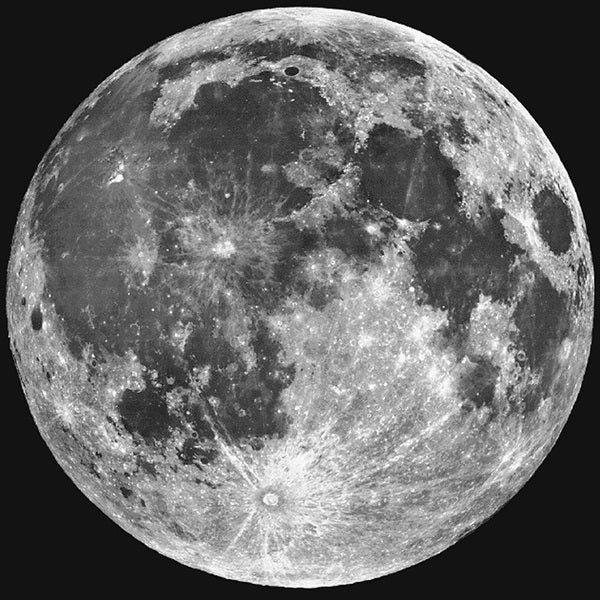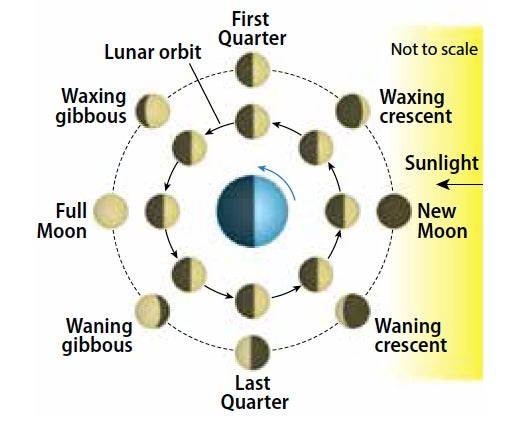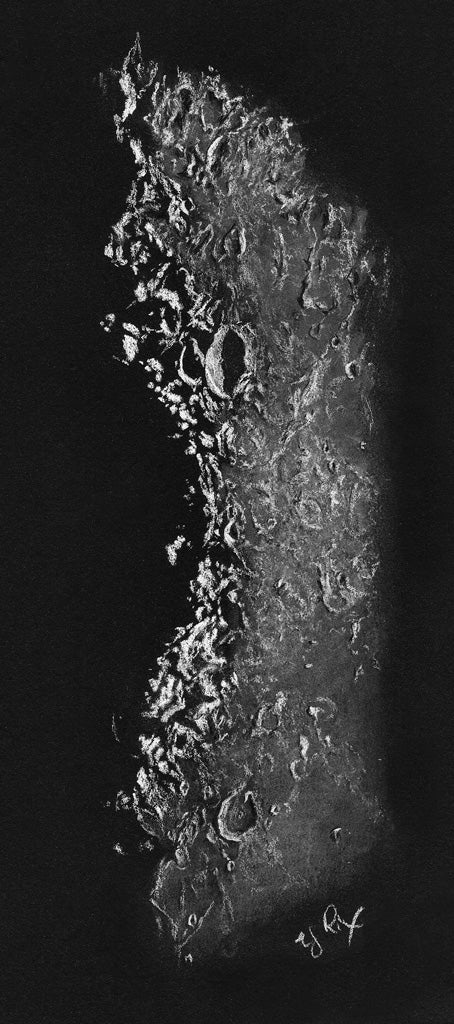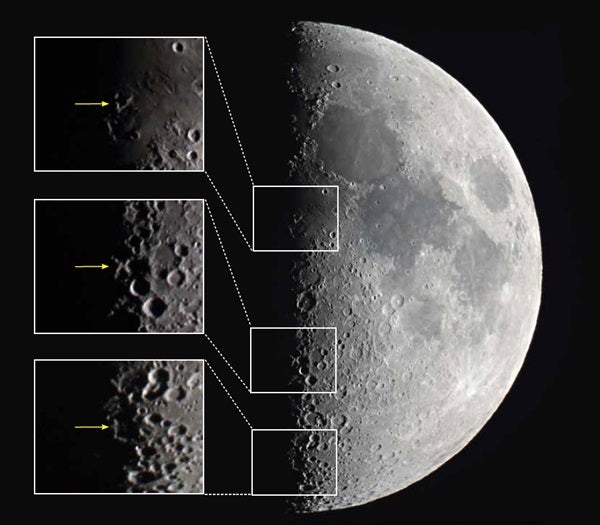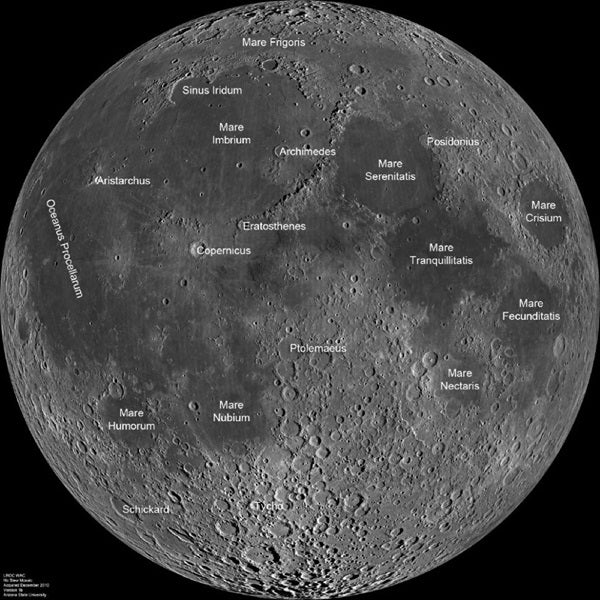And there’s also the Moon, washing out the sky with its bright light.
But instead of cursing its glare, why not stare at the Moon’s rugged and endlessly sublime surface?
You might find yourself hooked — as I became nearly five years ago, after decades of avoiding the Moon. But you might also find yourself confused, at least at first. The Moon’s rugged terrain can present identification challenges to the beginner. It did for me. That’s why I started sleeping with a map. But I’m getting ahead of myself.
Here are some tips to make the most of your new Moon.
Maps, maria, and memorizing
First, learn the major maria. These are lava plains once thought to be actual seas. Work from east to west, which follows the lunar sunrise. The first major sea is Mare Crisium or the Sea of Crises. It’s useful to memorize the Latin and the English, as the Latin names are the officially recognized ones.
Efforts such as these led me to doing my Moon-map homework in bed — hence, sleeping with my map. But preparing for observing is part of being a good observer.
Get on the beam
The dividing line between lunar night and day is called the terminator. Features are best seen when closer to the terminator. Farther away, surface definition gets washed out in the harsh sunlight. As you become a more experienced lunar observer, you might appreciate some details under bright illumination, such as the white ray patterns of impact ejecta or the presence of dark patches in some craters. But first, focus on becoming adept at orienting yourself to the terminator and your map while at the eyepiece.
Both Grego and Planck include good information on lunar science. That’s part of the pleasure of moongazing: Piecing together events over eons and understanding the violent past of our satellite. The science is fascinating.
For another dive into such matters and as a necessity to supplement your map, you’ll need a good lunar atlas. The best atlas currently in print is the 21st Century Atlas of the Moon by Charles A. Wood and Maurice J.S. Collins. It is brimming with sharp photographs and excellent descriptions. I have used mine so much that I had to get it rebound! It’s appropriate for all levels of expertise.
A basic online guide to what’s visible on the Moon daily can be found at https://www.shallowsky.com/moon/ but be forewarned the charts referenced are more advanced. NASA’s Scientific Visualization Studio’s Moon Phase and Libration site allows you to “dial a Moon” to any date and time you wish (although note that time input is in Universal Time). You can then download a detailed map with lunar features labeled. And, of course, Astronomy magazine’s “Sky this month” and “Sky this week” columns regularly feature timely lunar targets.
Take your time
Part of the joy of lunar observing is its relative ease. You can set up your scope in the backyard while dinner is cooking or take a break for a quick observing session with your kids between chores.
But the more you learn your way around and the more your resources help you decipher what you are looking at, the more you’ll want to slow down. And the more you pay close attention to just one area, even one crater or one part of a crater, the more you will notice.
Consider completing a lunar observing certificate with the Astronomical League or the Royal Astronomical Society of Canada. You’ll elevate your lunar game considerably with such systematic approaches. I’ve felt a sense of real accomplishment after earning two such certificates. You’ll move from a beginner to a seasoned observer at your own pace.
And by being patient, you’ll be surprised. One evening, while studying the sore-thumb feature of Mons Penck, I saw a patch of sunlight grow in a crater whose name I didn’t know — Hypatia, the map told me. The sunrise blossomed on Hypatia’s floor like a slow candle flame. It was exquisite.
As selenographers James Nasmyth and James Carpenter wrote in the 1903 edition of their book The Moon Considered as a Planet, a World, a Satellite, it’s during these such moments that you can truly “be in thought a lunar being.”

